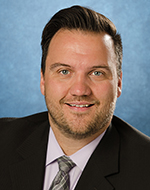Page Content
 As part of our annual research in preparation for the release of the provincial budget, I usually devote some time in February to looking at updated numbers on student and teacher populations. It is a good indicator of adequacy of funding and status of classroom conditions.
As part of our annual research in preparation for the release of the provincial budget, I usually devote some time in February to looking at updated numbers on student and teacher populations. It is a good indicator of adequacy of funding and status of classroom conditions.
For a number of years now, the student population has been expanding rapidly. The updated projections for 2016/17 show that Alberta’s public, separate and francophone school board enrolments will be just over 647,000, an increase of 1.9 per cent over last year.
Over the next three years, by the way, student population is set to grow by 6.5 per cent. This is in addition to the 16 per cent growth experienced since 2009.
And what happened to teacher population growth in that same time period, you might ask? Well, we actually saw teacher positions decline in the first two years after 2009. It took two more years after that to recover the positions lost. It was not until 2014 that we finally saw substantial growth in the teaching population. From 2009/10 through 2013/14, the student population had grown by 7.7 per cent, but the teacher population had grown by only 0.3 per cent.
And while I don’t have specific numbers for education assistants and other support staff, teachers widely report that the level of supports that existed in classrooms just a few years ago is no longer there.
Unfortunately, this hiring lag has
continued, and expanded, through to this year. While our student population is 16 per cent higher than it was in 2009/10, the teaching population has increased by only seven per cent.
So, how did this happen? Has government funding kept pace with student population growth?
The short answer is yes. Even under the former PC government, per pupil grant rates largely remained the same and were ultimately applied to cover student population growth.
The long answer is more complicated. In a number of years, smaller grants were cut, and in some years the funding of the large base grants were left uncertain at budget time. Take, for instance, Budget 2011, which projected a funding shortfall of $107 million. Ultimately the money came through when Alison Redford was elected as PC leader, but the funds came too late for school boards to quickly change school-based budgets and teacher timetables. Similar uncertainty existed come budget time in 2013 and in 2015.
So I can’t completely blame school boards for being skittish about hiring new teachers at a time when funding was uncertain. However, at the end of the day, school boards got the funding and teachers were still not hired to the extent that they were needed.
As a result, the relative size of the teaching force is smaller than it was in 2002, before teachers all around the province went on strike to protest classroom conditions that had grown unworkable.
So why, if the per pupil funding has remained largely the same since 2009, have staffing levels not kept up? And where has that money gone, if not to hire teachers and educational assistants?
Well, this brings me to another bit of research that I do at budget time.
For a number of years now, the government has published a graph on budget day that tracks “school board financial health” over the past 11 years. It shows the total amount school boards hold in accumulated surplus, capital reserves and deferred revenue.
On Aug. 31, 2016, that number approached a provincial total of $914 million.
And it has grown steadily — by a total of 58 per cent — at the same time as the gap between the student and teacher population widened (see the graph at bit.ly/boardsurpluses).
Although the data is somewhat overwhelming, one can follow the money.
While the student population has skyrocketed, teacher hiring has lagged even though the money has been made available. And as a result, school board surpluses have grown to nearly
$1 billion.
We are well overdue for a correction. School boards must take the money they have been given this year, combined with the money that has accumulated in reserves, and hire more teachers and education assistants to support student learning as much as possible. ❚
I welcome your comments — contact me at jonathan.teghtmeyer@ata.ab.ca.
